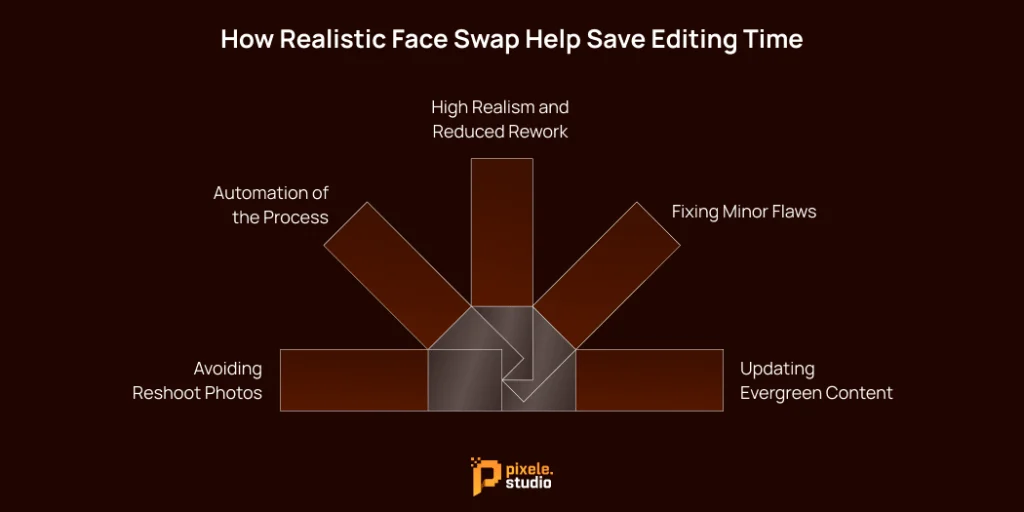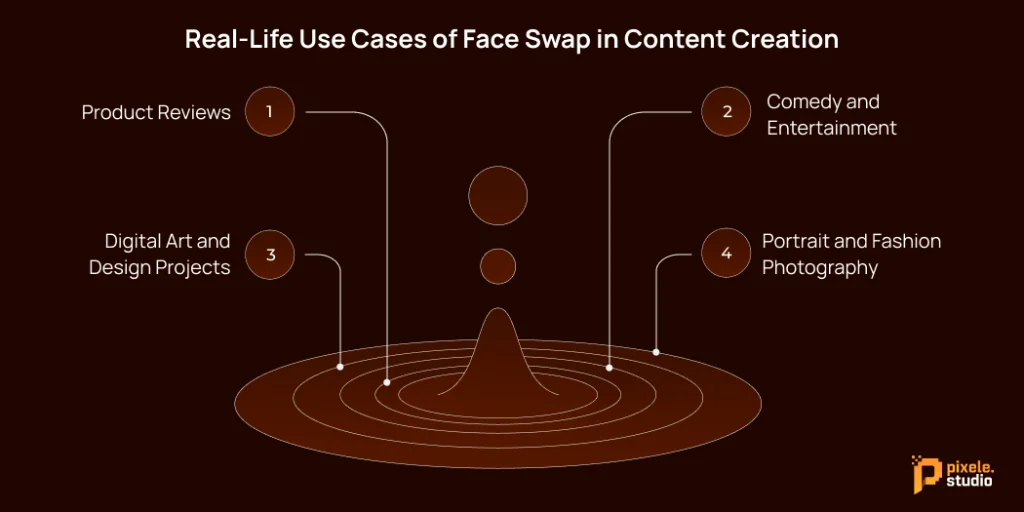The internet is built on creativity, trends and fast visuals. From memes, digital art, or edits on social media, creators are always looking for a new way to spice up their content.
That’s why many creators are now moving to face swap tools. These tools, powered by smart AI technology, make it possible to swap faces in images instantly while keeping them natural, detailed, and true to life.
For photographers, designers, and social media creators, AI face swap realistic tools have become a trusted part of their workflow. They reduce editing stress, allow more creative freedom, and help creators deliver polished images faster.
So, this post explains how content creators use realistic face swap to save editing time without losing quality.
What Is a Realistic Face Swap?
A realistic face swap is a smart artificial intelligence technology that replaces one face in an image with another while keeping it natural and lifelike. It focuses on matching facial expressions, lighting, and skin tones so the new face blends in perfectly.
This technique helps creators achieve professional-looking results without heavy manual edits. It’s used for photo retouching, creative projects, content creation, and even practical uses like virtual try-ons in the fashion and beauty industries.
Why Content Creators Are Using Realistic Face Swap Tools
Content creators feel a lot of pressure to make good videos all the time. They are always looking for easier ways to do their work, not just harder. Realistic face swap technology helps solve many common problems creators face when making videos.
First, it’s safety. Every creator knows that not every photo or clip turns out the way it’s planned. Maybe the lighting isn’t right, someone blinked, or the expression feels off. These small mistakes can delay production or require a complete redo. So, you can use face swap technology to fix just the parts that need it.
Second, it allows creators to try new face swap ideas. They can put their face on different bodies to act in skits, show off products, or make funny visuals. This makes it easier to create interesting content without needing a big team or complicated setups.
Finally, face swapping saves a lot of time. Editing can take longer than any other part of making content. By making it easier to avoid mistakes or refresh old images, face swap technology lets creators spend more time coming up with good ideas and engaging with their followers.
How Realistic Face Swap Help Save Editing Time

Using a face swap realistic tool can save a lot of time. Let’s look at how it makes editing easier.
Avoiding Reshoot Photos
Face swap technology saves you from having to do reshoots. If a photo has a minor issue, like a weird expression, bad lighting, or a small mistake, you don’t need to take it again.
Instead, you can use a face swap tool to fix it easily. This saves a lot of time and money because you won’t have to get everyone back together or set everything up for another photoshoot.
Automation of the Process
Face swap makes editing much easier. It lets creators get great results without a lot of manual work. Instead of spending hours fixing or swapping faces, you can use AI tools that do it quicker and more accurately. This gives creators more time for other parts of their projects, helping them get more done.
High Realism and Reduced Rework
Modern face swap tools focus on making edits look natural and realistic. They use advanced technology to study facial features, lighting, and expressions, creating results that are hard to spot as fake. This accuracy saves time and helps creators finish their projects with confidence.
Fixing Minor Flaws
Face swap tools are great for fixing minor issues in a photo or video. Instead of redoing the entire project, you can use these tools to fix things like awkward smiles or someone blinking at the wrong time. This makes the final product look much better without a lot of extra work.
Updating Evergreen Content
Evergreen content needs regular updates to stay fresh, especially if the visuals start looking old. Face swap technology helps creators refresh old content by updating faces or visual elements, without having to create everything new. This makes the content last longer and saves resources.
Real-Life Use Cases of Face Swap in Content Creation

To see how face swapping is making a difference, let’s explore how creators in various fields are using it. These real-world examples highlight the flexibility of modern face swap tools.
Product Reviews
Product reviewers can use face swaps to show how a product looks on different people. Instead of hiring many actors, they can use just one and swap their face for others.
This makes the review feel more real to a wider audience, adds a professional touch, and makes their content more appealing.
Comedy and Entertainment
Comedians use face swaps to play many characters in one scene without needing costumes or makeup. They can put their face on different actors or even old video clips. This helps them make funny and detailed skits easily. It’s a very popular way to use face swaps in entertainment.
Digital Art and Design Projects
Graphic designers and digital artists use face swap tools as part of their creative process. They experiment with new ideas, create artistic portraits, or mix different styles to produce visually unique images that attract attention.
Portrait and Fashion Photography
Photographers use realistic face swap AI to correct expressions, balance lighting, or enhance facial details without redoing full shoots. In fashion and beauty, it can also be used for virtual try-ons, helping showcase products on different faces or skin tones.
Ethical and Responsible Creation
As realistic face swap tools become more advanced, using them responsibly is very important. These tools are meant to inspire creativity, not to mislead or harm others.
Creators should always respect privacy, get permission before using someone’s image, and make it clear when a photo has been edited or altered.
Responsible use helps build trust with audiences and keeps creative work ethical. Whether for photography, marketing, or social media, transparency and honesty should always guide how these tools are used.
When creators use face swap online thoughtfully, it becomes a tool for creativity, without confusion.
The Future of Realistic Face Swap for Content Creators
Face swap technology is always getting better. Soon, these tools will be easier to use and more powerful. AI will get smarter, making it possible to swap faces even in tricky situations, like in fast-moving videos or scenes with bad lighting.
As this technology gets better, more creators will be able to make images that used to require a big-budget studio. This means small creators can compete with larger ones, putting the focus back on creativity and good storytelling.
Effortlessly switch faces in any image and create amazing results in seconds.
Conclusion
Realistic face swap tools are changing how creators edit and enhance their images. These tools help fix photos, explore new styles, and create imaginative visuals in less time. What once took hours of editing can now be done quickly while keeping a natural and polished look.
For photographers, designers, and social media creators, this free realistic face swap technology offers freedom to focus more on creativity and less on technical editing.
As face swap tools like Pixele Studio continue to improve, they are becoming a valuable part of modern image creation, helping creators work efficiently and produce stunning visuals.
Frequently Asked Questions
A realistic face swap tool is a software or app that lets you replace one face with another in a photo while keeping natural details like lighting, expressions, and skin tone.
Most face swap tools today are easy to use. They might take a little practice at first, but most platforms have tutorials and simple designs that make them easy for anyone to try, even without technical skills.
Yes, most trusted face swap tools are safe when used responsibly. Always choose reputable platforms that protect user data and avoid using anyone’s image without permission to stay ethical and compliant.
They help skip long retouching steps by automatically matching and blending faces in seconds. Instead of reshooting or manually fixing photos, creators can make quick and accurate edits, saving hours of work.
Creators should always respect privacy, ask for consent before using someone’s face, and clearly disclose edited images if needed. Responsible use ensures trust and avoids misleading audiences.